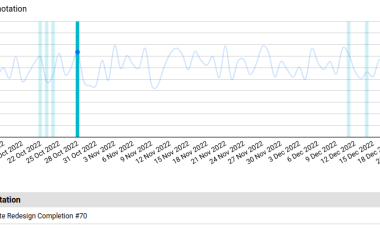Tips & tricks to optimize your website
Website optimization is an important yet frequently overlooked component of web development and maintenance. In fact, quite often, the term ‘website optimization’ is confused with search engine optimization. Website optimization includes server-side optimization, assets optimization, and platform optimization.
In this article, we will be sharing 9 tips to optimize your website.
Optimize images: Maintain images of the right size and do not use HTML scaling on the images. Optimize the image according to it’s file type.
Optimize HTML: Following are the parameters that you need to keep in mind while writing HTML scripts for an optimized website.
- Comply with HTML standards
- Make sure the scripts are free of white spaces
- Use simple HTML structures instead of complex ones
- Check for browser compatibility
- Make the website mobile-friendly
Reduce requests: Avoid bad requests by checking for 404 errors and minimize redirects. Also monitor for server errors every now and then. Reduce request for image sprites, browser caching etc to enhance the performance of your website.
Replace images of text with text: Text is always better from an SEO perspective as it renders faster. Speaking again from an SEO perspective, always use text for headers and not images. Using CSS and HTML could be an added advantage. Always keep in mind that there should be a harmonious balance between design and performance.
Remove unnecessary scripts: Removing unnecessary scripts is found to be better for security and also for comprehensibility of the code. Remove white spaces, unnecessarily repeated codes, and unused parts of the script.
Cache output: Output caching can minimize server processing, there by giving faster responses to your website visitors. This can be used to save time and server side resources.
Use Content Delivery Networks: Webopedia states “A content delivery network (CDN) is a system of distributed servers (network) that deliver webpages and other Web content to a user based on the geographic locations of the user, the origin of the web page, and a content delivery server." Using a content delivery network can do magic for your website.
Use GZip Compression: Whenever an HTTP request is made, the file is sent from the server to the client and vice versa. When these files are compressed, the transfer of these files occurs much faster.GZip is a powerful tool to perform this task, but do ensure you have the right version of GZip necessary for your server.
Optimize infrastructure: Do proper testing before the site is made live. Errors left unnoticed in a live site can be embarrassing and could scar the reputation of your company forever.
Shared hosting is not advisable for a business website. Maintain records of performance data and keep analysing it. Analytics has proved to be a powerful tool to improve business.
Please feel free to use the comments section to share your thoughts on this topic.



